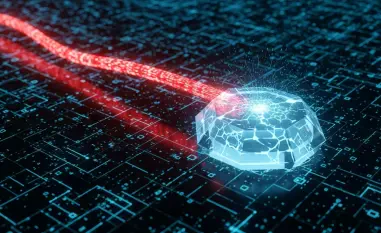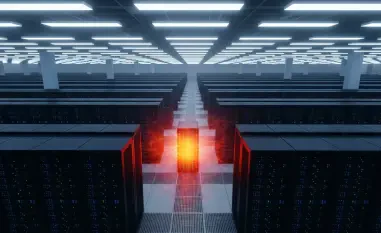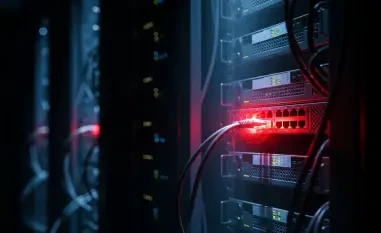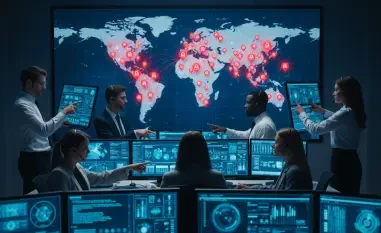Introducing Malik Haidar, a cybersecurity authority whose insights are pivotal in understanding global threats and defense strategies. As technological landscapes shift, Malik brings clarity to the complex interplay between business and cybersecurity, making him an ideal expert to delve into the inner workings of the Microsoft Threat Intelligence Center (MSTIC). In today’s discussion, we explore MSTIC’s significant influence on cybersecurity, shedding light on their techniques, collaboration, and challenges.
Can you provide an overview of the Microsoft Threat Intelligence Center (MSTIC) and its core mission?
MSTIC operates as a specialized unit within Microsoft, dedicated to identifying, analyzing, and combating sophisticated cyber threats that target the company’s products and customers. Their mission centers around preemptive threat intelligence and defense, ensuring that both Microsoft itself and the broader digital ecosystem are safeguarded against nation-state hackers and other malicious actors.
How did MSTIC come to prominence, and what role did it play in addressing the 2020 SolarWinds hack?
The 2020 SolarWinds hack was a turning point where MSTIC’s capabilities were vividly showcased. By rapidly detecting and responding to this massive breach—perpetrated by Russian intelligence—MSTIC demonstrated its adeptness in handling advanced persistent threats. This pivotal event highlighted their role as a critical player in the global cybersecurity domain, culminating in widespread recognition of their expert handling of complex cyber invasions.
What are some of the advanced threat-hunting techniques used by MSTIC?
MSTIC employs a blend of sophisticated tools and methodologies to hunt down threats. These techniques include anomaly detection, pattern recognition, and behavioral analysis, all aided by machine learning and AI technologies. They work to not only catch threats in real-time but also predict potential vulnerabilities before they can be exploited, maintaining a proactive stance in cybersecurity.
How does MSTIC’s role extend beyond mere defense, and what does its proactive approach to cybersecurity entail?
Beyond defensive measures, MSTIC actively engages in aggressive threat-hunting and vulnerability research. This proactive strategy places them in a position to anticipate future threats and inform preventative measures. By sharing intelligence and collaborating with partners, they extend their protective capabilities, aiming to deter hackers before they strike.
Can you elaborate on how MSTIC collaborates with government agencies and other tech companies?
Collaboration is crucial for MSTIC, enabling them to coordinate large-scale responses to cyber threats. They actively work with various governmental bodies and tech companies, ensuring information flow and joint efforts in combatting vulnerabilities. This network allows for comprehensive defense strategies and strengthens the cybersecurity infrastructure across sectors.
What challenges does MSTIC face as it navigates technical and geopolitical landscapes in cybersecurity?
MSTIC operates at the forefront of cyber conflict between nation-states, facing challenges that have both technical complexity and geopolitical sensitivity. They need to navigate these intricate landscapes while managing and mitigating threats from global actors, staying adaptable and vigilant as new vulnerabilities and political tensions arise.
How has the expansion of Microsoft’s cloud services globally impacted the work and importance of MSTIC?
As Microsoft’s cloud footprint expands, MSTIC’s role becomes even more pivotal in safeguarding vast amounts of data and infrastructure worldwide. This growth attracts sophisticated hackers, increasing MSTIC’s responsibility to protect Microsoft’s global services from diverse and highly advanced cyber threats, often scrutinizing every corner for potential weaknesses.
How has MSTIC evolved over the years in terms of tracking specific threat actors and developing tools?
Over the years, MSTIC has refined its expertise by developing specialized capabilities to detect and routinely track various threat actors. They have enhanced their suite of analytical tools, which are continuously updated to stay ahead of evolving cyber threats. This evolution reflects their increasing depth and sophistication in mitigating digital offenses.
In what ways does MSTIC operate similarly to a private intelligence agency?
MSTIC functions much like an intelligence agency, with its sophisticated operations in threat hunting and analysis. They gather and leverage data to devise strategic approaches to cyber threats, often intersecting with national security concerns, showcasing their unique operational model within the private sector.
How did you perceive the attention drawn by the Bloomberg report on this typically low-profile group?
The Bloomberg report brought deserved attention to MSTIC, highlighting their crucial yet largely unseen efforts in global cybersecurity. It underscored the significant impact and value of MSTIC’s operations, promoting awareness and recognition within the industry of their sophisticated threat intelligence work.
What kind of impact do you think MSTIC has on the broader digital ecosystem beyond Microsoft?
MSTIC’s influence extends far beyond Microsoft, contributing significantly to the overall stability and security of digital infrastructures globally. By thwarting sophisticated cyber threats, they help preserve the integrity of communication, commerce, and security systems, reflecting their wider role in the ecosystem.
How do you see the role of private companies like Microsoft developing quasi-governmental capabilities to tackle digital threats?
Private companies are increasingly adopting quasi-governmental roles to shield against cyber threats, creating a fusion of public and private defense strategies. This evolution signifies a shift where companies act as frontline defenders in cyberspace, assuming more responsibility to protect their consumers and infrastructures.
Could you provide insight into the partnership approach in threat intelligence sharing as practiced by MSTIC?
MSTIC believes in a collaborative approach to cybersecurity. They engage in dynamic partnerships to share threat intelligence, fostering better joint defense mechanisms. By practicing open communication and coordinated strategies, MSTIC enhances the overall efficacy of global cyber threat response efforts.
What unique position does MSTIC hold at the intersection of private enterprise and national security?
MSTIC navigates a unique intersection where private sector initiatives meet national security concerns, blending corporate objectives with safeguarding essential digital infrastructures. This role positions them as pivotal actors in both defending corporate assets and supporting broader global security efforts.
Do you have any advice for our readers?
Security awareness and proactive strategies are vital for everyone. Stay informed about the latest cyber threats and adopt robust security measures in your digital practices. Vigilance and precaution are key in this ever-evolving cybersecurity landscape.













